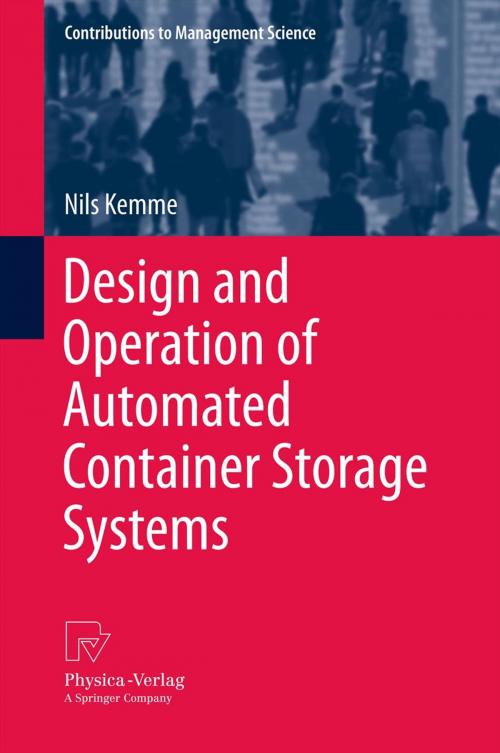Design and Operation of Automated Container Storage Systems
Business & Finance, Management & Leadership, Operations Research, Production & Operations Management| Author: | Nils Kemme | ISBN: | 9783790828856 |
| Publisher: | Physica-Verlag HD | Publication: | November 7, 2012 |
| Imprint: | Physica | Language: | English |
| Author: | Nils Kemme |
| ISBN: | 9783790828856 |
| Publisher: | Physica-Verlag HD |
| Publication: | November 7, 2012 |
| Imprint: | Physica |
| Language: | English |
The storage yard is the operational and geographical centre of most seaport container terminals. Therefore, it is of particular importance for the whole terminal system and plays a major role for trade and transport flows. One of the latest trends in container-storage operations is the automated Rail-Mounted-Gantry-Crane system, which offers dense stacking, and offers low labour costs. This book investigates whether the operational performance of container terminals is influenced by the design of these storage systems and to what extent the performance is affected by the terminal's framework conditions, and discusses the strategies applied for container stacking and crane scheduling. A detailed simulation model is presented to compare the performance effects of alternative storage designs, innovative planning strategies, and other influencing factors. The results have useful implications future research, practical terminal planning and optimisation.
The storage yard is the operational and geographical centre of most seaport container terminals. Therefore, it is of particular importance for the whole terminal system and plays a major role for trade and transport flows. One of the latest trends in container-storage operations is the automated Rail-Mounted-Gantry-Crane system, which offers dense stacking, and offers low labour costs. This book investigates whether the operational performance of container terminals is influenced by the design of these storage systems and to what extent the performance is affected by the terminal's framework conditions, and discusses the strategies applied for container stacking and crane scheduling. A detailed simulation model is presented to compare the performance effects of alternative storage designs, innovative planning strategies, and other influencing factors. The results have useful implications future research, practical terminal planning and optimisation.















